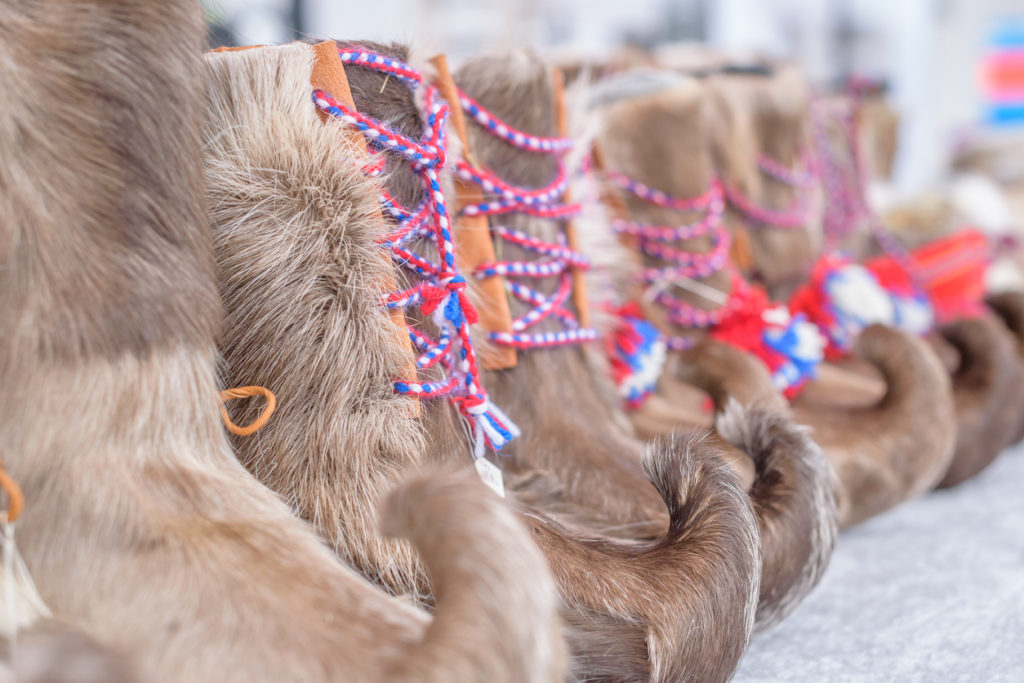What are the Unique Art Forms in Sami Culture?
Lapland, with its pristine landscapes and rich cultural heritage, offers a unique window into the world of the Sami people. As the indigenous inhabitants of Northern Europe, the Sami have cultivated a vibrant and distinct culture that is deeply intertwined with their environment. In this blog post, we will explore some of the unique art forms in Sami culture, shedding light on their traditional arts, indigenous crafts, and cultural heritage. This exploration will not only enrich your understanding of Sami culture but also enhance your travel experience in Lapland. At VALO Finland, we aim to provide you with an immersive and enlightening journey into this fascinating world.
Exploring Sami Visual Art: Duodji
Duodji, the traditional Sami handicraft, is a cornerstone of Sami visual art. This art form encompasses a wide range of crafts, including textiles, woodwork, and bone carving. Each piece of Duodji is not only a work of art but also a functional item, reflecting the Sami’s deep connection to their environment and their practical way of life.
Textile crafts, such as weaving and embroidery, are particularly significant in Duodji. Sami artisans create intricate patterns using natural materials like wool and reindeer sinew. These patterns often hold symbolic meanings, representing elements of nature, family heritage, and cultural identity. The vibrant colours and detailed designs make Sami textiles a visual feast and a testament to the artisans’ skill and creativity.
Woodwork and bone carving are other essential aspects of Duodji. Sami craftsmen use locally sourced materials to create tools, utensils, and decorative items. The craftsmanship involved in these creations is meticulous, with each piece reflecting the artisan’s intimate knowledge of the material and their cultural heritage. These items are not only functional but also carry a deep cultural significance, making them cherished heirlooms passed down through generations.
The Storytelling Tradition in Sami Music: Joik
Joik is a unique form of Sami music that serves as a powerful medium for storytelling and cultural expression. Unlike conventional songs, Joik does not follow a structured melody or lyrics. Instead, it is an improvisational form of vocalisation that captures the essence of a person, place, or event. Each Joik is deeply personal and often evokes strong emotions, making it a profound way to connect with Sami culture.
The origins of Joik are ancient, and it has been an integral part of Sami life for centuries. Traditionally, Joiks were used in various ceremonies and rituals, serving as a means to communicate with the spiritual world. Today, Joik continues to be a vital part of Sami cultural identity, performed at festivals, gatherings, and even in contemporary music settings.
Listening to a Joik is a unique experience that offers a glimpse into the Sami worldview. The haunting melodies and rhythmic patterns transport listeners to the vast landscapes of Lapland, evoking the sounds of nature and the Sami’s deep connection to their land. For visitors to Lapland, experiencing a live Joik performance is a must, providing an authentic and moving insight into Sami culture.
Sami Clothing: The Significance of Gákti
The Gákti is the traditional clothing of the Sami people, and it holds great cultural and symbolic significance. Each Gákti is meticulously crafted, with its design, colours, and patterns varying according to the wearer’s region, family, and social status. The Gákti is not just a garment but a visual representation of Sami identity and heritage.
Traditionally, the Gákti is made from reindeer hide, wool, and other natural materials. The craftsmanship involved in creating a Gákti is intricate, with detailed embroidery and beadwork adorning the garment. The colours used in a Gákti are often vibrant, with red, blue, green, and yellow being the most common. Each colour and pattern has specific meanings, often related to the wearer’s family history and regional affiliation.
Wearing a Gákti is a source of pride for the Sami people, and it is often worn during important cultural events, such as festivals, weddings, and religious ceremonies. For visitors to Lapland, seeing the Gákti up close offers a unique opportunity to appreciate the artistry and cultural significance of Sami clothing. It is a tangible connection to the Sami’s rich heritage and their enduring traditions.
At VALO Finland, we believe that understanding and appreciating the unique art forms of Sami culture can greatly enhance your travel experience in Lapland. Our luxury retreats provide the perfect base for exploring this fascinating region, with expert guides available to help you delve deeper into the cultural heritage of the Sami people. Whether you are interested in traditional arts, indigenous crafts, or simply want to immerse yourself in the beauty of Northern Europe, we are here to make your journey unforgettable.
Join us at VALO Finland and discover the magic of Lapland through the lens of Sami culture. From the intricate beauty of Duodji to the haunting melodies of Joik and the vibrant symbolism of the Gákti, there is so much to explore and appreciate. Let us guide you on this enriching journey, where every moment is an opportunity to connect with the unique and enduring traditions of the Sami people.
